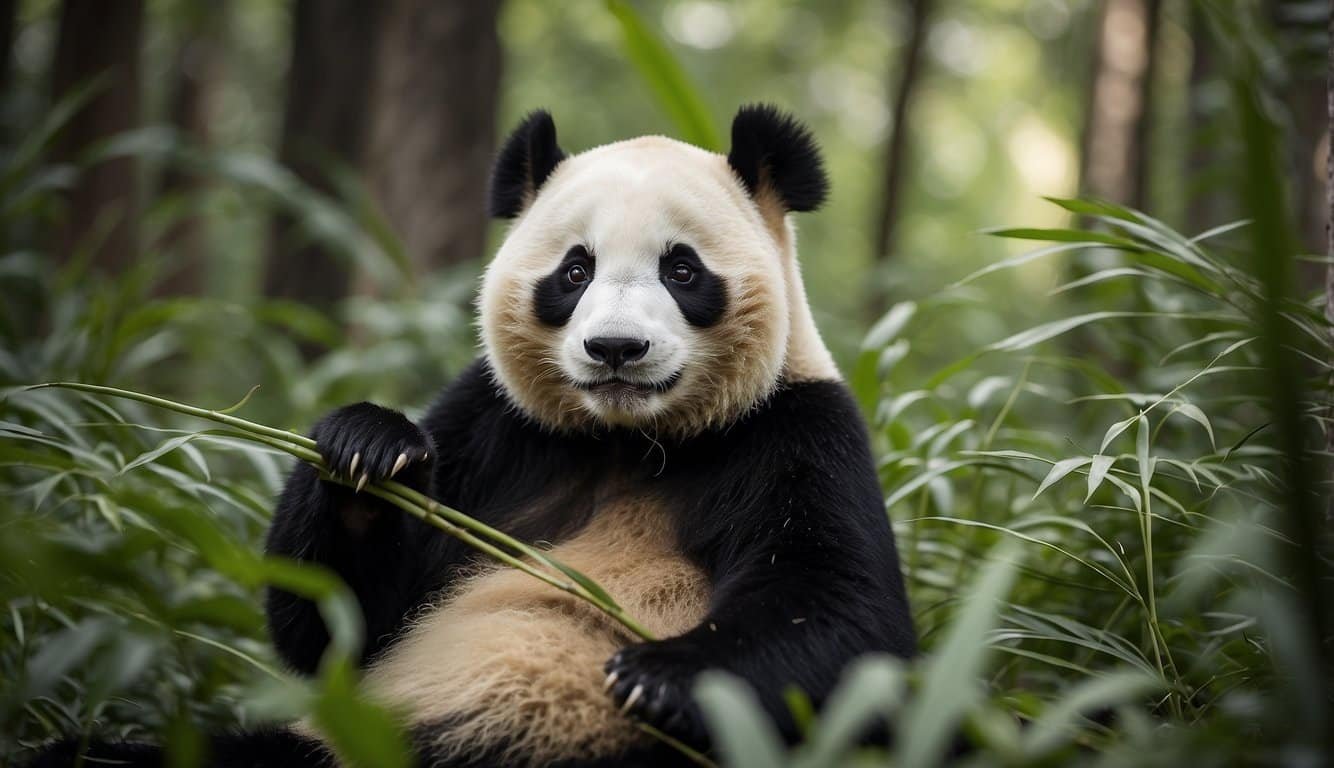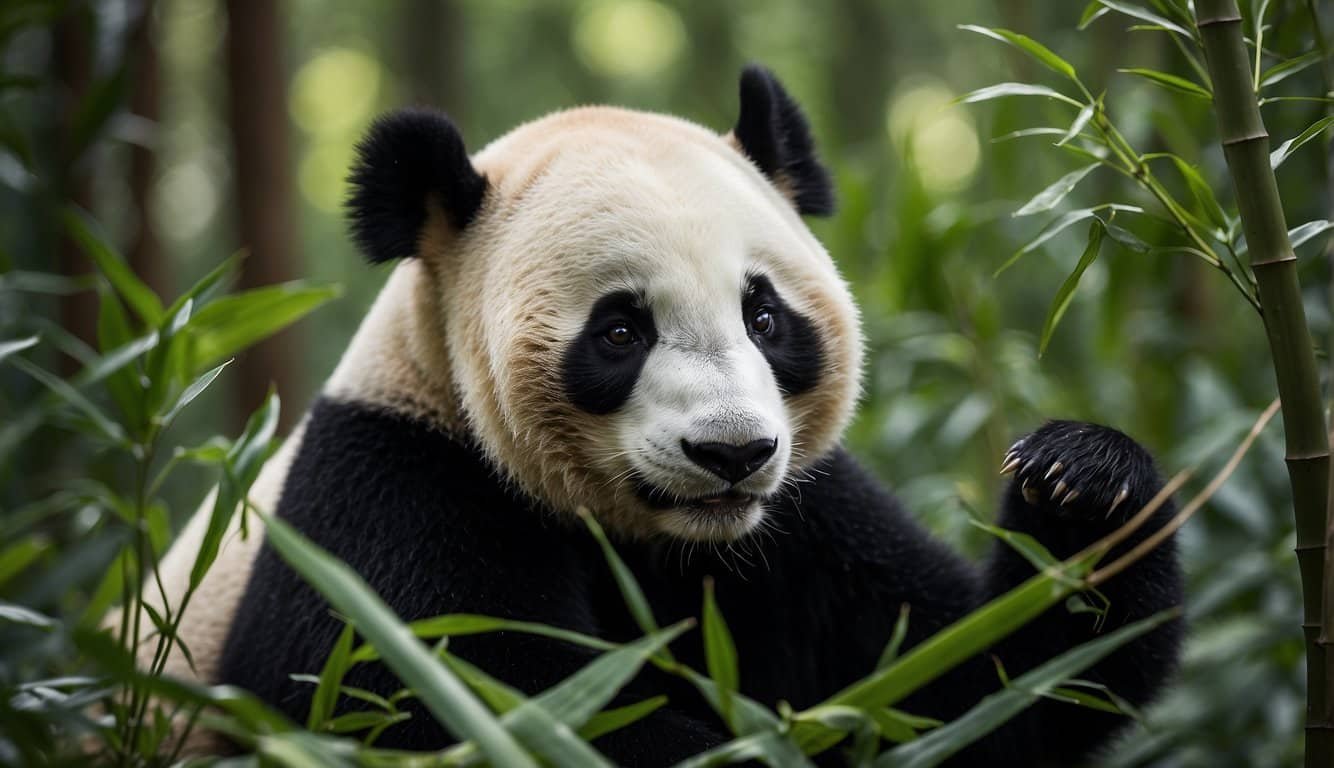Panda Conservation and Habitats

Giant pandas are one of Earth’s most beloved animals and their black-and-white fur makes them instantly recognizable. Indigenous to central China, these creatures have long been the symbol of wildlife conservation and lauded as a national treasure in China. The bamboo forests they call home are critical not just for pandas but for a variety of other species that share the ecosystem.
Pandas primarily feed on bamboo and require large swaths of forest for sustenance and reproduction. Habitat protection has been central to panda conservation, especially as they are vulnerable to habitat destruction. China has made significant strides in this area, creating numerous panda reserves that are aimed at providing contiguous stretches of bamboo forest for wild pandas to thrive.
Conservation efforts include initiatives both in the wild and in captivity. The Chinese government has been working to expand protected areas and improve the reserve system, significantly reducing threats like deforestation and poaching. Meanwhile, organizations like the World Wildlife Fund (WWF) contribute by raising awareness and supporting conservation programs.
Efforts such as captive breeding programs are crucial, given the challenges pandas face with pregnancy and raising cubs. Giants in conservation, such as the famous Chengdu Research Base of Giant Panda Breeding in Sichuan, have been remarkably successful and are important for bolstering the wild panda population.
Despite previous classifications as an endangered species, the hard work of conservationists has led to the rebound of panda numbers. The status of giant pandas has been upgraded to “vulnerable,” reflecting the positive impact of wildlife conservation measures. However, this doesn’t signal the end of the road for conservation. Ensuring pandas are safe from the specter of extinction requires ongoing support for their habitats and vigilance against threats.
For enthusiast readers, to glimpse into the world of panda conservation and the habitats that encapsulate their existence, peek into detailed studies and reports such as those on the impact of the ecosystem services from panda reserves, or broad overviews brought to us by conservation efforts and habitat use over time.
Physical Characteristics and Behavior

Giant pandas, known scientifically as Ailuropoda melanoleuca, are striking creatures with their iconic black and white coat, most recognized for their distinctive black ears and patches around the eyes. Adult pandas have a robust build and are part of the bear family, Ursidae. Males are typically larger than females, with some males reaching a weight of up to 160 kg (350 lbs).
A panda’s diet is predominantly made up of bamboo, which requires them to eat for up to 12 hours each day to satisfy their nutritional needs. Despite bamboo being low in nutrients, a panda’s digestive system, originally meant for carnivores, has adapted to extract what it needs from its fibrous intake.
Behaviorally, giant pandas are generally solitary, with a strong sense of smell aiding in communication and identity marking within their ranges. They are good climbers and often use their strong hind legs for scaling trees, displaying behaviors such as rolling to play or show submissiveness.
Pandas are placental mammals, with females entering estrus once a year, leading to a gestation period of around 95 to 160 days. Cubs are born blind and extremely dependent, reflecting the helplessness at birth typical of many placental mammals. Mothers usually care for their offspring in a den, isolated from others to ensure their safety and health.
Despite their generally non-aggressive nature, pandas are equipped to fend off threats if necessary. Their conservation status is of continuing interest, as they have long been considered endangered due to habitat loss and low genetic diversity.
The life span of a giant panda in the wild is roughly 20 years, but in managed care, such as at the Memphis Zoo, they can live into their mid to late 20s, offering valuable insights into their health and behaviors. With conservation efforts, the population has seen some encouraging improvements, but pandas are far from being out of the proverbial woods, remaining a symbol of wildlife conservation.
Panda Reproduction and Diet

When discussing the life cycle of the giant panda, it’s hard not to be intrigued by their unique breeding habits. Females are fertile just once a year for about 2-3 days, which makes the timing for successful mating a delicate matter. When successful, after a gestation period that ranges from 95 to 160 days, a female panda may give birth to one or two cubs, with twins being a common occurrence, although usually only one cub survives.
Panda cubs are born extremely small and vulnerable, weighing just 90 to 130 grams, a striking contrast compared to the size they grow to as adults. Males play no part in rearing the young; this responsibility falls entirely on the mother.
Moving on to their diet, giant pandas have a voracious appetite for bamboo, munching on shoots, stems, and leaves with relish. They can consume up to 38 kilograms of bamboo every day to meet their nutrition requirements. Despite their classification as carnivores, they have evolved to subsist almost exclusively on this woody plant, devoting around 10 to 16 hours a day to feeding.
To sustain the mother and her cubs, especially during lactation, the nutrient and energy requirements of red panda become crucial. Lactating females may need to eat more than the usual amount of bamboo, as they require additional energy to produce milk that is rich in fats and protein to feed their cubs.
In some cases, pandas will supplement their diet with other forms of vegetation, and even small animals or carrion, but these are minor components. Their peculiar dietary habits, devoted to herbivory in an ancestrally carnivorous lineage, underscore the biological uniqueness of the giant panda.

